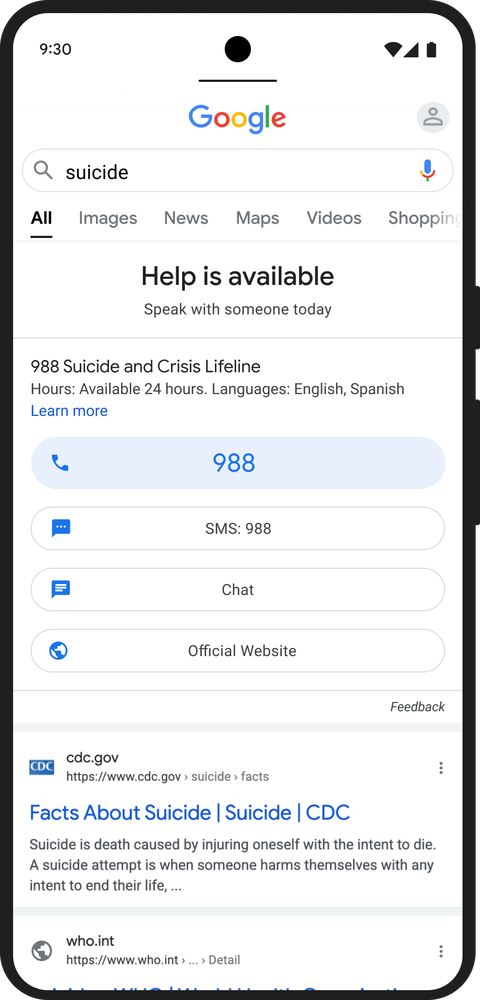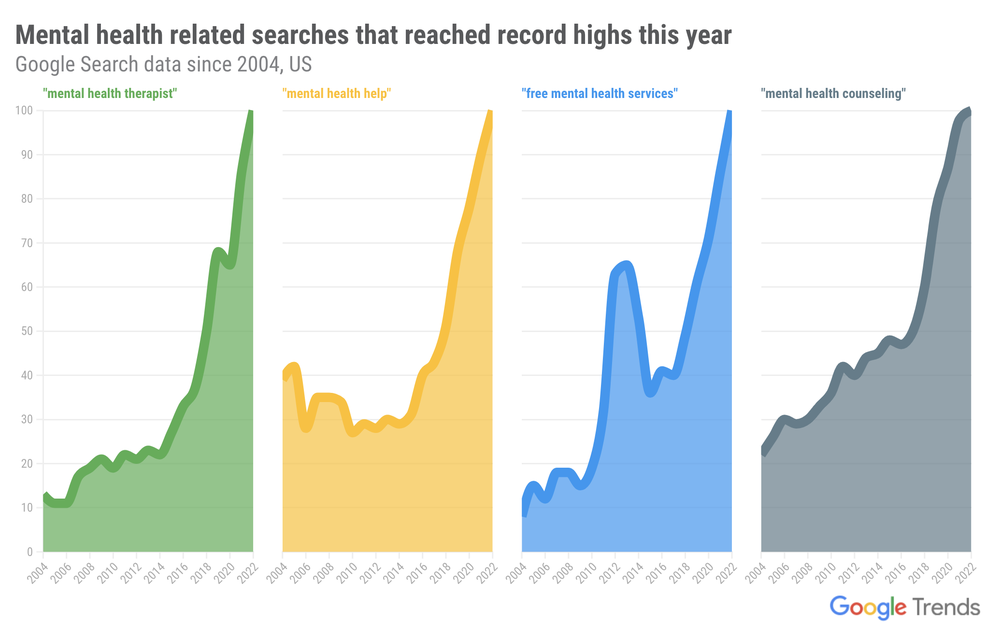
Three out of four people in the United States come to the internet first with questions about their health and wellness. The pandemic has exacerbated the need for high-quality, timely and actionable health information — in fact, since 2020, people are searching for “mental health hotline” twice as much as they did before. On Search, we work to connect people in crisis situations to reliable support as quickly as possible.
Today, when you search for information about suicide prevention in the U.S., you’ll find a new, easy-to-remember hotline number and chat support at the top of your search results. We’ve updated this to reflect the new national mental health crisis hotline number, 988. Services are provided by the 988 Suicide and Crisis Lifeline, a network of more than 200 state and local call centers funded by the U.S. Department of Health and the Substance Abuse and Mental Health Services Administration (SAMHSA).
Suicide is a leading cause of death among people of all ages globally. According to the Centers for Disease Control and Prevention (CDC), suicide is the second-leading cause of death among individuals between the ages of 10-14 and 25-34 in the U.S. While Google has included suicide prevention information at the top of relevant search results for many years, this new hotline will make it easier for people in emotional distress and seeking mental health support to get help.

With search interest in mental health resources reaching record highs this year, 988 provides a critical lifeline for those in need. “Hope has a new number, and it’s 988,” says Dr. John Draper, Executive Director of 988 Suicide and Crisis Lifeline. “This is a historic moment in our country’s approach to mental health. When people call or text 988, they will be connected to trained counselors who will hear them, support them and connect them to resources. With this transition to 988, our hope is to reach so many more people in emotional crisis, and connect them to care.”

For over a decade, we’ve worked closely with crisis support providers to help people navigate topics like suicide, substance use disorders and domestic violence. In addition to returning helpful information from reliable sources for related queries, we work with local suicide crisis partners to surface high-quality information around the world. Beyond the U.S., suicide hotlines are available in dozens of countries and we recently expanded the feature to Costa Rica, Pakistan and Belgium. We’ll continue working to bring this feature to even more countries.
People come to Google looking for information in critical moments, and access to high-quality information is crucial to helping them navigate those moments safely. Providing hotline resources is one way we’re continuing to help people stay safe while they search.








